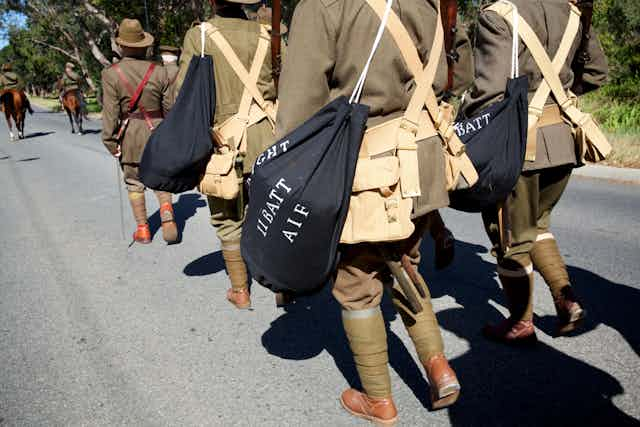The Royal Commission into Institutional Responses to Child Sexual Abuse has recently heard testimonies of junior military personnel who were subjected to brutality and sexual violence while serving as recruits. The testimonies highlighted the age-old military tradition of initiation ceremonies and their place in building morale.
Peter Sinclair, a former NSW governor and senior naval officer, told the commission sailors have been conducting initiation ceremonies for centuries, but that:
Initiation itself is not a bad thing. If it is an initiation that involves bastardry and abuse and physical abuse and denigration, of course that’s not to be condoned.
He conceded, though, that initiations can get “out of control”.
Why do initiations occur?
Initiations occur across history and cultures, almost always among groups of young men. Initiations involving hazing occur in educational, sporting, criminal gang and military contexts.
In today’s world, fraternal, gender-divided domains are evident in military barracks, sporting locker rooms, fishing cabins, corporate clubs and gang hideouts. These are places almost exclusively inhabited by men nested within deeply masculine cultures seeking status and exclusivity.
Fraternity, it is argued, builds morale. This is fundamental to military culture and to the widely held belief that initiations are crucial. While initiations have rich cultural meanings across different cultures working to build solidarity, they are also easily distorted by tribalism.
The recent Australian Defence Force (ADF) review into personal conduct argues that tribalism undermines the three tenets of military life – professionalism, trust and capability.
A long history
Military initiation rituals include hazing, fagging, ragging, beasting, bastardisation and fourth-class training. These words refer to the practices of beating, basting, penetrating, bullying or humiliating through fraternal rituals. Nuggeting and the eagle-drop are two examples of hazing or bastardisation recorded in the Australian Defence Force.
These are mechanisms of group integration. They are all different sides of a similar phenomenon – the domination of others and the reassertion of the self (or the group).
Research explains that initiation rituals generate “rape-prone cultures”. They are not in and of themselves corrupt – rather, they create the potential for things to get “out of control”.
In 1898, the hazing scandal at the American military academy at West Point exposed the ongoing brutalisation of Oscar Booz, who later died from his injuries. Upon the establishment of the Australian army’s training college at Duntroon in 1911, General W. T. Bridges decreed that there would be no “fagging” at this esteemed college. Duntroon was to be no West Point.
Duntroon and the Australian Defence Force Academy (ADFA) – Australia’s prestigious officer institutions – figure prominently in the public discourses of military culture over the past five decades.
There have been numerous bastardisation and sexual assault scandals over this period; they go hand-in-hand with a deep and enduring history of initiations. The rituals often involve perverse and brutal sexual violence.
Thanks to the royal commission, we have learnt about other examples of this archetypal military tradition in the training of young men of other ranks. We have also learnt how these practices spilt into a generalised culture of abuse perpetuated within a rigid, hierarchical and controlling institution.
Why is the royal commission looking at it?
In 2011, the ADFA Skype incident opened the floodgates on initiation, abuse and institutional denial over half-a-century old. It instigated a series of cultural reviews.
The DLA Piper review identified about 800 cases of abuse, which led to the establishment of the Defence Abuse Response Taskforce (DART). The DART has responded to about 2,250 cases of abuse across a period of five decades. It has recently extended its business to investigate more cases.
Military institutions and militarised cultures seek to generate a unity of people and purpose. Initiation rituals have been a historically stable strategy to achieve this.
Within the military institution, this striving for fraternity and unity has culminated in histories of abuse. These are nested with institutional practices that have failed to encourage reporting, recording and accountability. When called to account, the ADF command has contributed to this abuse through deception, diminution and denial.
In recent years the ADF has improved its disposition to scrutiny. But, as with any fraternity, scrutiny is considered an imposition rather than an opportunity. The tendency to keep things within the ranks overrides the impulse for openness, fairness and transparency.
The royal commission hearings represent a long-awaited chance to scrutinise what has been another dark national secret. The way forward for institutions like the military is to open themselves to outside scrutiny. Only when these dark practices are exposed to light can we be confident the military is a safe place to serve.

